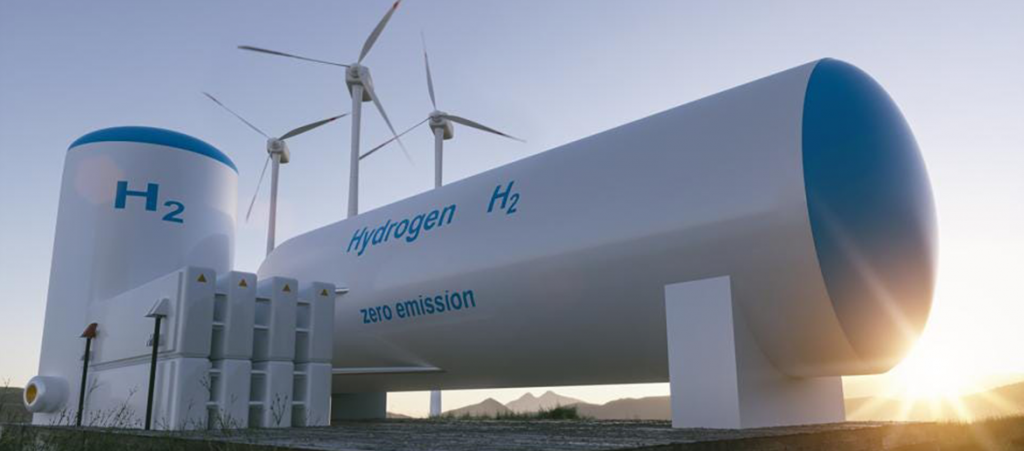
Everyone’s been talking about hydrogen in 2021. That includes Prime Minister Scott Morrison, who announced a ton of funding for hydrogen projects in recent months, as he pursues his ‘technology not taxes’ approach to climate policy in the lead up to next year’s election. Hydrogen is a tricky beast, though. While it has the potential to be a genuinely green source of energy, and help decarbonise some emissions-heavy industries, it can also be used to prolong the life of fossil fuels. Is the hype around hydrogen as a unicorn renewable energy solution legit?
Understanding what makes it clean n’ green is key to cutting through the political spin that dominates the discussion of hydrogen technology. To help you out, here’s a basic primer on all things hydrogen.
What is hydrogen?
Hydrogen, as you might have learned in high school science, is the most abundant element in the universe. It’s present in everything from food to fertilizer, and most living things.
In addition to being an essential property for life, hydrogen has also been touted as a potential source of clean energy (bit of an overachiever, you might say!) This is because when hydrogen is burned, it doesn’t emit any greenhouse gasses; in fact, the only thing it emits is water. For this reason, climate scientists, engineers, and policymakers are all hopeful about using hydrogen to power some aspects of our economy, cleanly.
But there a few important caveats to this good news…
What are potential uses for hydrogen?
We know that an ‘energy transition’ is needed for the world to have any hope of curbing the climate crisis. In essence, that means we need to turn to different energy sources than we’re currently using to power our everyday.
When we talk about things like driving cars, cooling our homes, or keeping the lights on, we’re usually speaking about electrification. For example, switching from petrol or diesel powered cars, to electric battery operated vehicles (EVs), which are powered by renewables.
But there are a bunch of industrial activities which can’t be electrified for various reasons – including aviation, long haul shipping, or steel production. To decarbonise these industries, we have to look to other fuel sources, like hydrogen, to offer realistic options for zero-emissions power.
Bad news…
— World and Science (@WorldAndScience) December 9, 2021
Blue hydrogen is often marketed as clean, but in actuality, it may be even worse than burning coal:https://t.co/JsVCnvcwuq
How is hydrogen fuel produced?
Hydrogen doesn’t pop up on its own – it’s typically found as part of a compound with other molecules (the H2 in your H2O). There are many different ways to separate hydrogen from these compounds, with or without the help of fossil fuels.
‘Green’ hydrogen is the cleanest of them all. It uses renewable energy to power a process which separates hydrogen from oxygen in water.
‘Blue’ hydrogen uses natural gas (a fossil fuel) to produce pure hydrogen, and relies on unproven carbon capture and storage technology to bury the emissions created during this activity.
Other methods (for brown and grey hydrogen) similarly rely on coal and natural gas to power the hydrogen production process. These methods release greenhouse gas emissions straight into the atmosphere.
Here’s the main thing to remember: while hydrogen itself might be a zero-emissions fuel, when it’s produced with the help of natural gas, coal, or methane, it’s not so clean anymore.
Can hydrogen help us reach zero emissions?
If the hydrogen is sourced with the help of renewable energy, yes! Green hydrogen does not produce any emissions and we expect this will be a contributor to a zero-emissions economy.
But there are some general teething issues with this hydrogen technology. Hydrogen requires a massive amount of renewable energy infrastructure and water in order to be produced cleanly, and it’s currently quite expensive. Without adequate, or even prolific investment in renewable energy in Australia, renewable-backed hydrogen can’t thrive.
Green hydrogen isn’t necessarily the focus of the Morrison government’s plan, though. They are focused on ‘clean hydrogen’. It’s a small distinction and sounds fine, but look a little closer and you’ll see that the planned investment in ‘clean hydrogen’ includes funding for both green hydrogen and fossil fuel-produced hydrogen. Very sneaky. Not very clean.
There are concerns that this kind of public investment in blue hydrogen will cement the place of the fossil fuel industry in Australia’s transition away from coal, oil and gas, and let the industry greenwash its way through a critical decade on climate.
THE TAKEAWAY: Green hydrogen will certainly have a role to play in the decarbonisation of major emitting industries (like long-haul transport), but it’s unlikely we’ll be driving hydrogen powered cars or using it in our homes. It’s already much cheaper and more straightforward to implement solutions like electric vehicles and solar or wind-generated electricity for homes. While continued development will make green hydrogen technology an important part of the future energy landscape, it’s just one part of the solution. We still need strong funding for wind and solar, which are ready for us now, too.





Comments are closed.